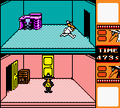(Page complete) |
m (notes about NES and SMS versions) |
||
| Line 46: | Line 46: | ||
</gallery> | </gallery> | ||
== NES == | == NES == | ||
Kemco bought the rights to convert and release this game on the Famicom, which they did on Apirl 26, 1986. They later released the game in the United States for the NES in October of 1988. This conversion was also distributed by Mattel in Australia in 1990. | Kemco bought the rights to convert and release this game on the Famicom, which they did on Apirl 26, 1986. They later released the game in the United States for the NES in October of 1988. This conversion was also distributed by Mattel in Australia in 1990. This version features a health bar for each of the spies that you can actually see and monitor during a battle. The bar automatically refills itself after a certain period of time without fighting has passed. | ||
<gallery> | <gallery> | ||
Image:SVS_NES.gif|Screenshot | Image:SVS_NES.gif|Screenshot | ||
| Line 53: | Line 53: | ||
</gallery> | </gallery> | ||
== Sega Master System == | == Sega Master System == | ||
Published by Sega in their card format in 1986. Later released on cartridge. | Published by Sega in their card format in 1986. Later released on cartridge. This version features 16 stages as opposed to the original 8. Many of them are more complex, and some contain as many as four floors. | ||
<gallery> | <gallery> | ||
Image:SVS_SMS.gif|Screenshot | Image:SVS_SMS.gif|Screenshot | ||
Revision as of 17:06, 9 January 2008
Amstrad CPC
Converted for play on the Amstrad CPC and published by Beyond - Challenging Software in 1985 for Great Britain (packaged along with the Atari 8-bit version). Rereleased in Europe on cassette by Hi-Tec Software.
-
Screenshot
-
Cassette inlay
-
Box art
Apple II
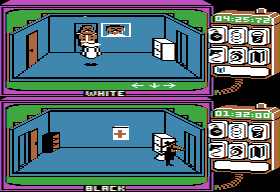
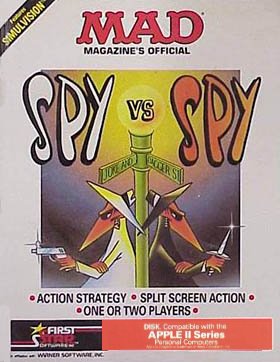
Developed and published in America by First Star Sofware in 1984.
Atari 400/800/XL/XE
Developed and published in America by First Star Sofware in 1984 (packaged along with the Commodore 64 version). Converted for play in Great Britain and published by Beyond - Challenging Software in the same year (packaged along with the Amstrad CPC version). Rereleased in Europe on cassette by Hi-Tec Software. It is, for some unknown reason, the only version to feature blue time bombs against a red background instead of the other way around.
-
Screenshot
-
American box art
-
European box art
-
Cassette inlay
Atari ST
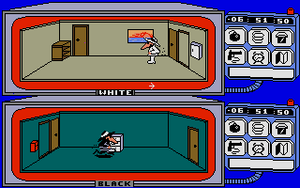

Converted for play on the Atari ST and published by Wicked Software in 1989 for Great Britain. As a 16-bit system, this conversion has some of the best graphics.
Commodore 64
Developed and published in America by First Star Sofware in 1984 (packaged along with the Atari 8-bit version). Converted for play in Great Britain and published by Beyond - Challenging Software in the same year. Rereleased in Europe on cassette by Hi-Tec Software.
-
Screenshot
-
American box art
-
European box art
-
Cassette inlay
Commodore Amiga

Converted for play on the Amiga and published by Wicked Software in 1989 for Great Britain. As a 16-bit system, this conversion has some of the best graphics.
Game Boy Color
Developed by Kemco in 1999. This version is considerably upgraded, featuring not 8 but 32 different floor plans, which must all be completed to see the final ending of the game. Features a password system in order to save your completion progress through each level. This version was released after a version of Spy vs. Spy for the regular (mono) Game Boy, which was actually based on one of the Spy vs. Spy sequels.
-
Screenshot
-
American box art
-
Japanese box art
NES
Kemco bought the rights to convert and release this game on the Famicom, which they did on Apirl 26, 1986. They later released the game in the United States for the NES in October of 1988. This conversion was also distributed by Mattel in Australia in 1990. This version features a health bar for each of the spies that you can actually see and monitor during a battle. The bar automatically refills itself after a certain period of time without fighting has passed.
-
Screenshot
-
NES box art
-
Famicom box art
Sega Master System
Published by Sega in their card format in 1986. Later released on cartridge. This version features 16 stages as opposed to the original 8. Many of them are more complex, and some contain as many as four floors.
-
Screenshot
-
American box art
-
Japanese box art
Sinclair ZX Spectrum
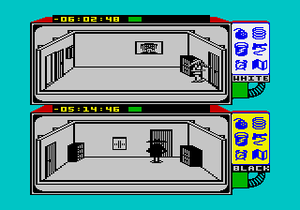

Converted for play on the ZX Spectrum and published by Beyond - Challenging Software in 1985 for Great Britain. Rereleased in Europe on cassette by Hi-Tec Software.









